I am taking you on a personal tour of my own chicken coop and I am spilling the beans on some of my own chicken coop hacks including solar lighting, temporary brooder boxes, DIY pallet wood nesting boxes and more!
I was so inspired by the amazing chicken coop hacks I shared in this post that I had to share some more! So, today, I am taking you on a personal tour of my own chicken coop! Plus, I am spilling the beans on some of my own chicken coop hacks… including solar lighting, temporary brooder boxes, DIY pallet wood nesting boxes and more!
Come check it out in today’s Behind the Scenes Chicken Coop Tour!
Playhouse Chicken Coop:
The first thing that you might notice about our chicken coop is that it doesn’t look very “chicken coop-ish”. That’s because it’s not a chicken coop at all! It’s actually a children’s playhouse kit from The Little Cottage Company! The supplies are delivered to your home partially assembled. You just put all the walls and roof together and screw it into place. It was easy to put together (other than one of the walls being mislabeled) and anyone who is mildly-handy can handle this project. Easy peasy!
We used shingles from Habitat for Humanity ReStore (we love that place!) and salvaged composite decking material for the flooring (more about that later!). While using a kit may have been pricier than building our own coop, this was a good option for us. It allowed us to get a super cute coop in a portion of the time it would have taken to build one from scratch.
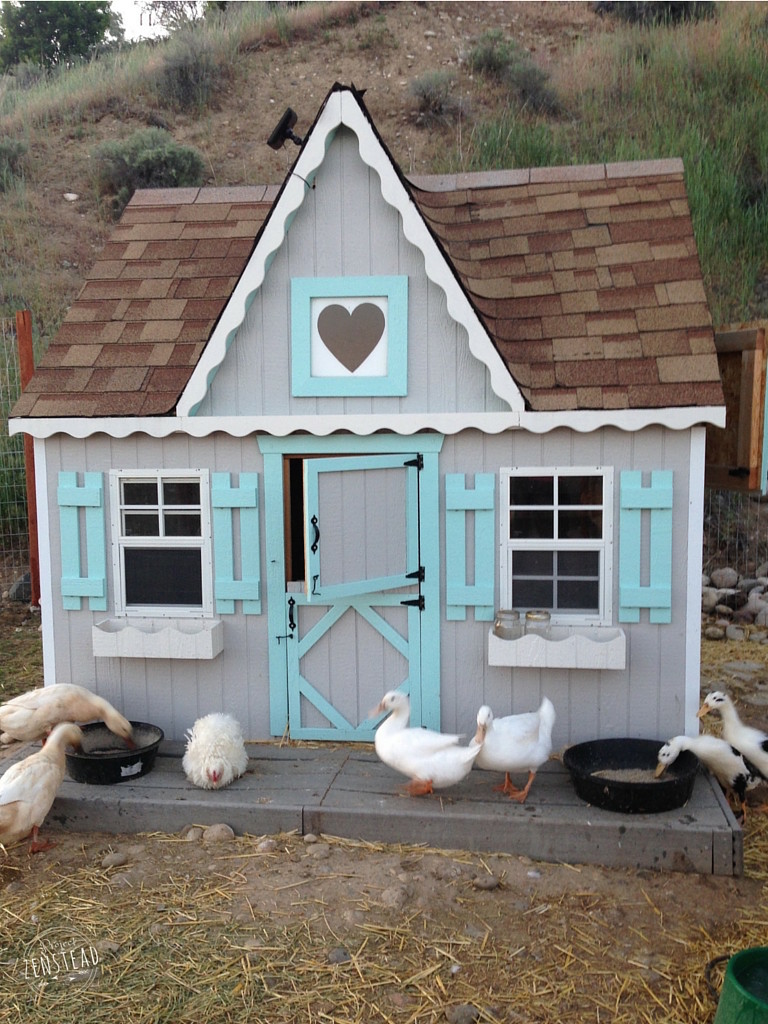
Another reason we chose this style over a traditional coop is because we house our ducks and chickens together currently. Ducks are much larger than chickens and require a larger house.This 8’x8′ coop houses all of our ducks and chickens perfectly! (Side note on housing ducks and chickens together: There is definitely some debate on whether ducks and chickens should be housed together. There are definitely some different care requirements for ducks and chickens, but we have found that they co-exist very well!)
Ventilation through Doors & Windows:
This model of playhouse has some features that make it very functional as a coop! It has two doors: a full-sized “people door” on the side of the coop and a smaller “bird door” on the front of the coop. Both are barn-style doors, which allow us to open just the top half, just the bottom half, or both. It’s fantastic for ventilation! In the winter, we open just the bottom half of the small “bird door” to allow the birds to come and go without making the coop too drafty. In the summer, we open all the doors to allow extra ventilation and cross breezes. The two small windows can also be opened and are screened.
Storage:
Since our chicken coop was a pre-manufactured kit, we customized and outfitted the interior to fit our needs. One of my favorite customizations is the lofted shelf that we built inside the coop. Our coop is tall enough to allow us to easily stand while inside so there was enough vertical space to allow for a loft. The loft spans just under half of the coop. It fits two straw bales along with some other supplies. The extra storage has been a life-saver and has allowed us to use what would have otherwise been wasted vertical space.
Lights:
We installed a solar light that we bought on Amazon for about $30. It was easy to install and we don’t have to worry about running cords or electricity to the coop for lighting purposes. It’s not super bright, but it gets the job done! It’s a nice break from having to wear headlamps or tote flashlights out to the coop!
Removable Brooder:
This spring, we made a removable brooder box that we can slide directly into the coop under the lofted shelf. We made a simple frame out of 1×1’s, stretched chicken wire over the frame, and secured it with a staple gun.
It’s amazing to have the baby birds outside in the coop instead of in my office! It has also allowed for an extremely easy transition period, as our adult birds were already used to living with the younger birds. Once the ducklings and chicks were old enough, we simply removed the brooder and stored it away until we need it again next Spring. So easy!
Heat Lamp System:
We also installed a heat lamp system for the brooder. I’m not a fan of heat lamps in the chicken coop. It’s just not worth the risk of a coop fire! The only time we use heat lamps is during very cold weather for our young chicks and ducklings.
The heat lamps are installed under the loft, above the brooder. The lights are secured so that they can’t be bumped or knocked down. All power cords have been secured to the wall beams and ceiling rafters of the coop. The cords run under the storage shelf ledge to the coop wall and then up to the roof rafters and over to a power strip that is secured to the inside of the door frame. All of the wires are up off the ground, so there is no chance of the birds getting tangled or pecking them. Since things get dusty in a chicken coop, I clean them often.
DIY Nesting Boxes:
We added some rustic flair with our DIY nesting boxes made out of repurposed pallets. Okay, truthfully, our original intent had nothing to do with adding “rustic flair”. We needed nesting boxes and we happened to have pallet wood on hand. But the nesting boxes did turn out quite well! Best of all, they were free! And the chickens definitely approve of the nesting boxes! They approve so much that we have a hard time keeping them out of the boxes… Oh the joys of broody hens!
Composite Flooring:
We completed the coop with a salvaged composite decking floor. Yes, that’s right, our coop has a composite deck floor. ‘Cause our chicks are fancy. Not really. But we did have a lot of reasons for choosing this flooring.
We decided on wood flooring (instead of a dirt or sand floor) for an extra layer of protection from predators who could dig into the coop. However, we knew that wood can be hard to clean and absorbs moisture easily. That’s when we remembered the pile of composite decking pieces we had salvaged from my parent’s patio remodel several years early!
I can honestly say, it was the best option we could have made for flooring! We keep the floor covered in straw which we rake out about once a week. The straw goes into the compost pile or is used as mulch in the garden. The floor is super easy to clean because it’s made of composite plastics! You can easily sweep it, rake it, and spray it off with the hose. It won’t become moldy or musty and it won’t wear out over the years. Composite decking can be expensive to buy, but it’s a “forever” flooring option that will never wear out and is easy to clean. If you can find or salvage composite decking material, I highly suggest it for your chicken coop floor!
I love hearing about the little details that people incorporate into their own coops! I would love to hear what fun and functional features you have incorporated into your own chicken coops and duck houses!
Share your best chicken coop ideas and hacks in the comments below so we can all enjoy!
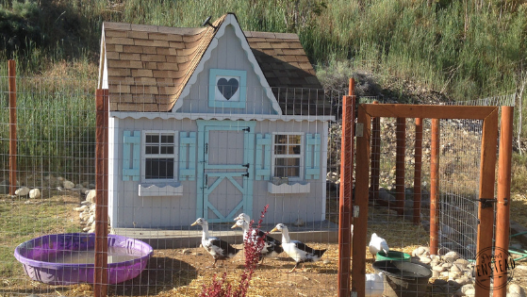
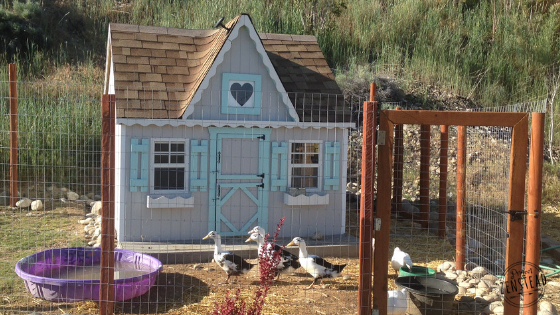

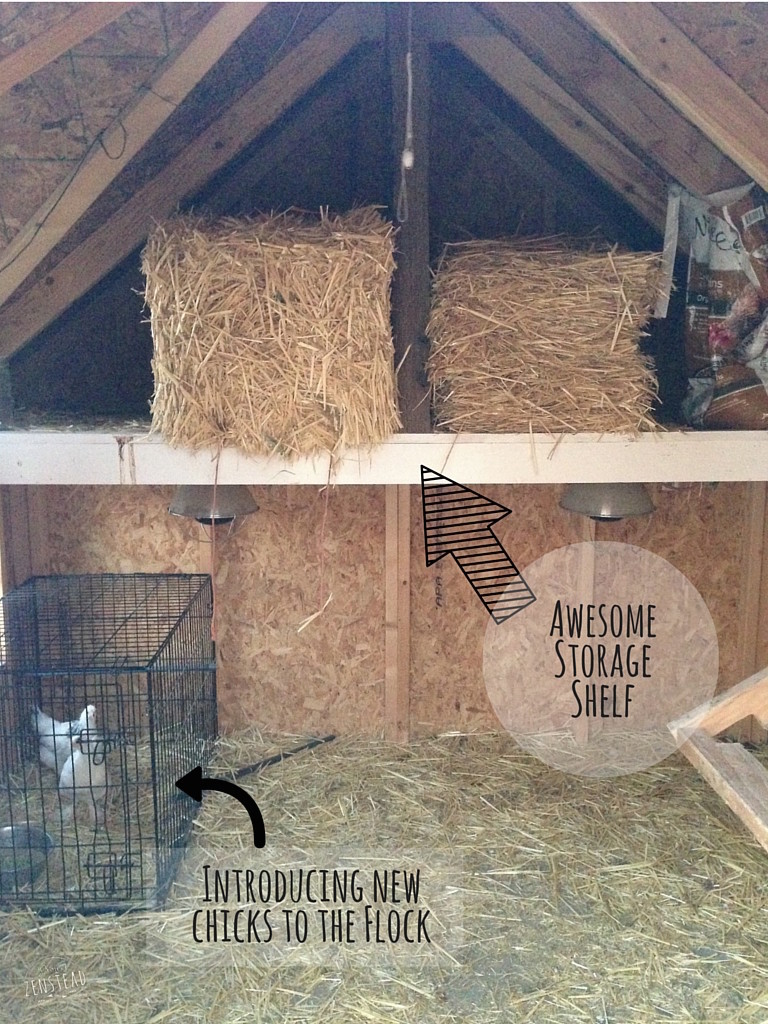

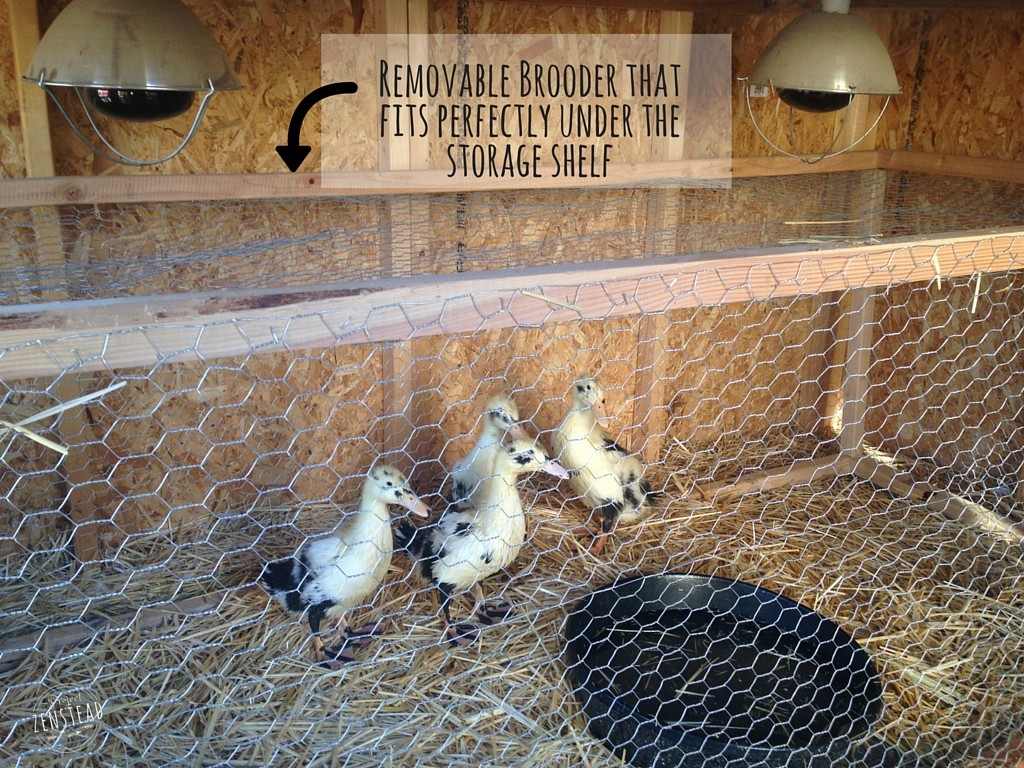
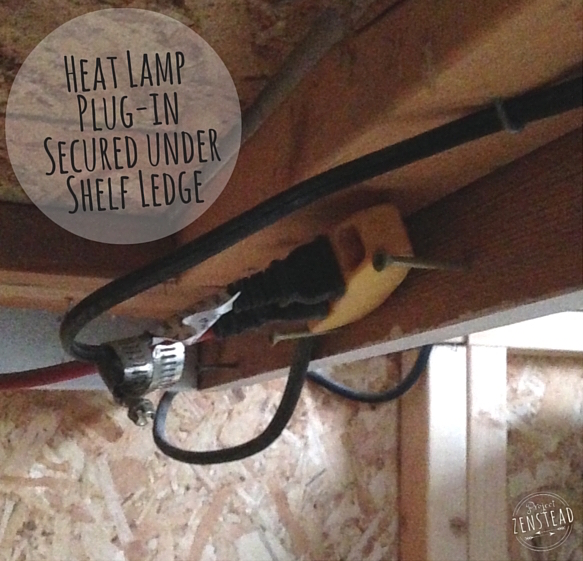
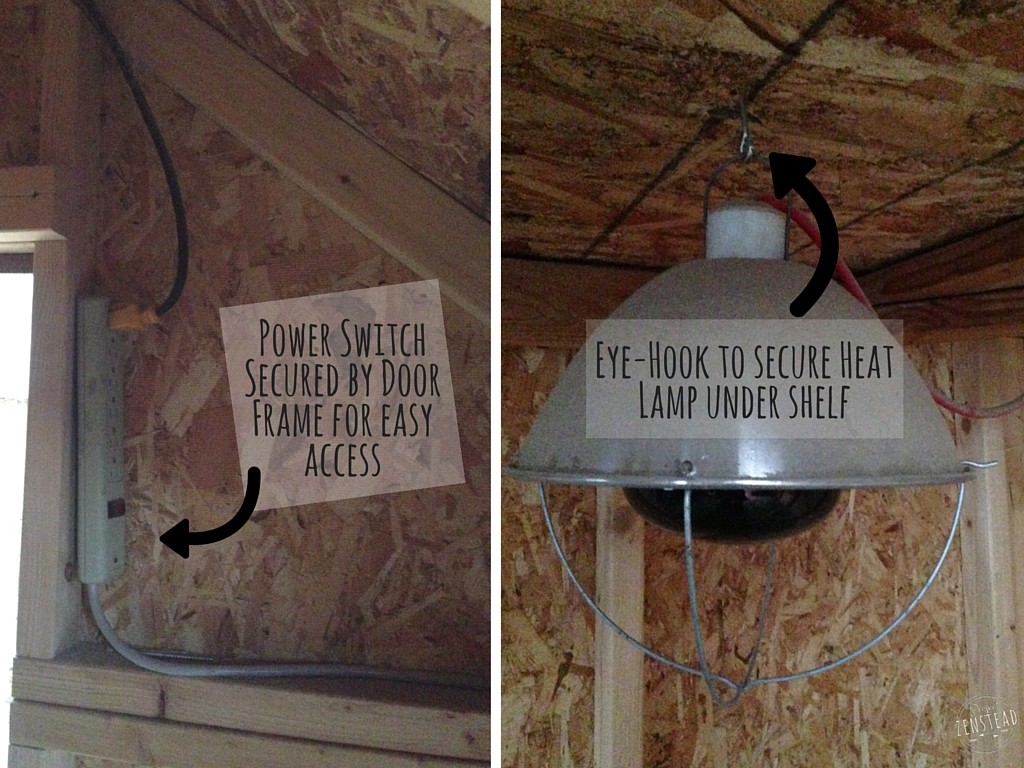
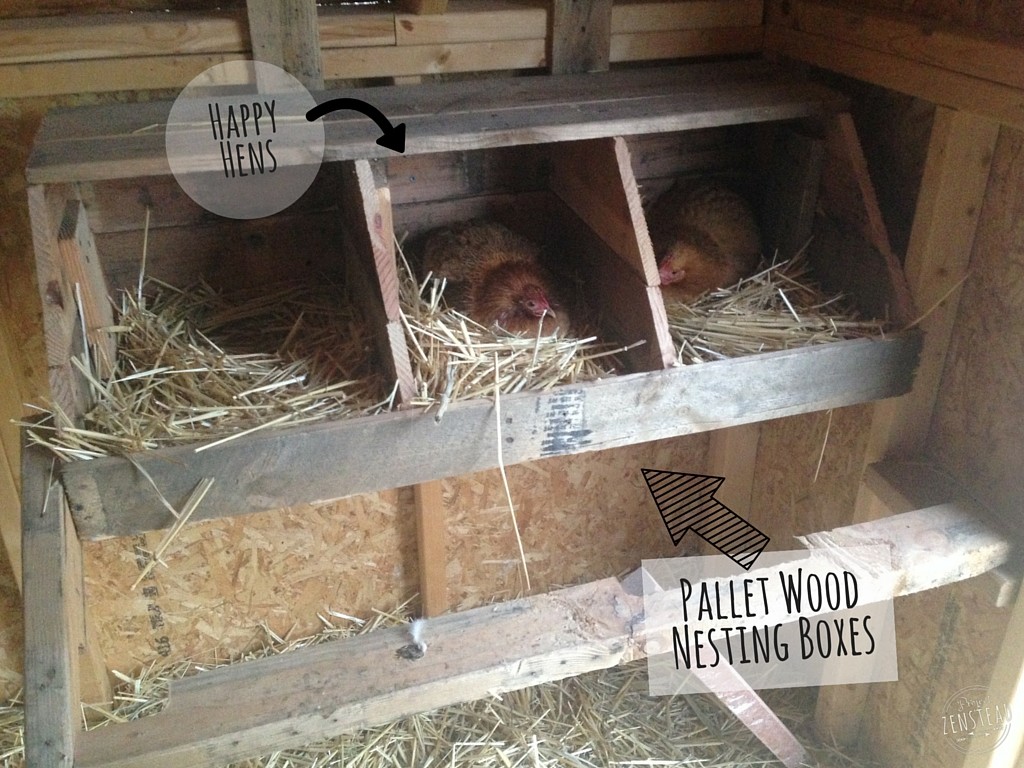
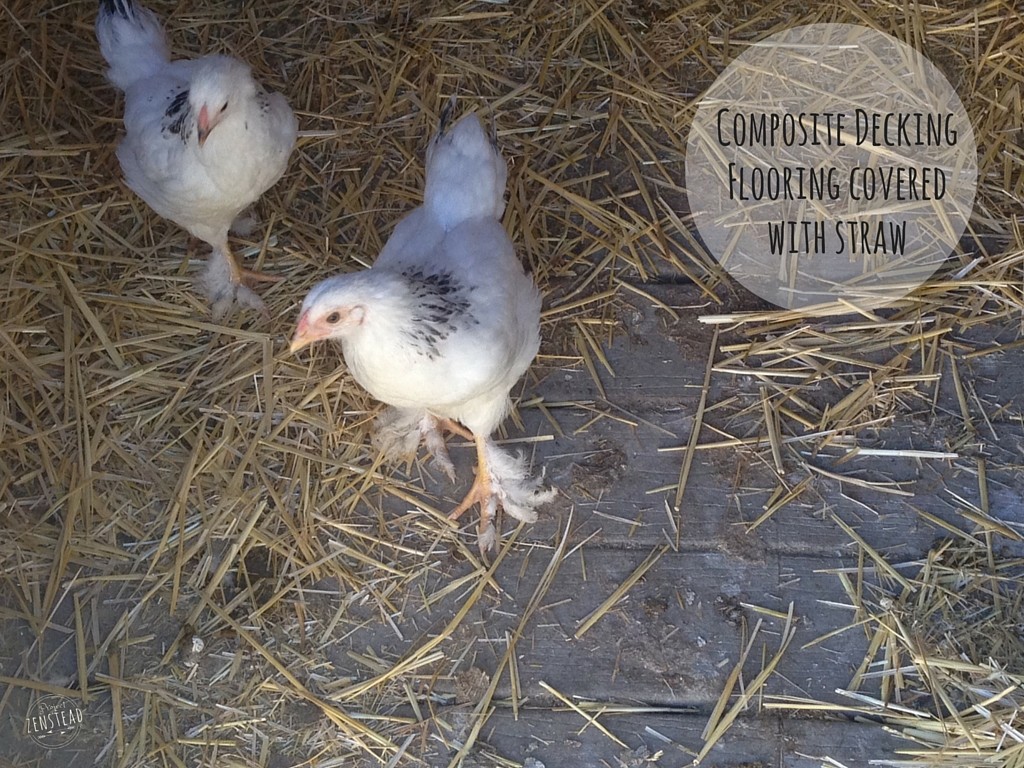
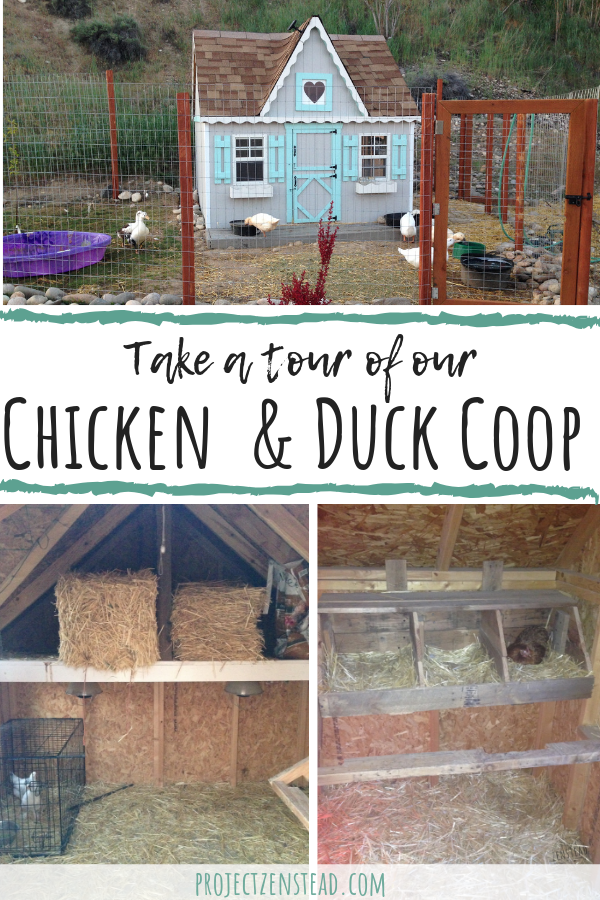



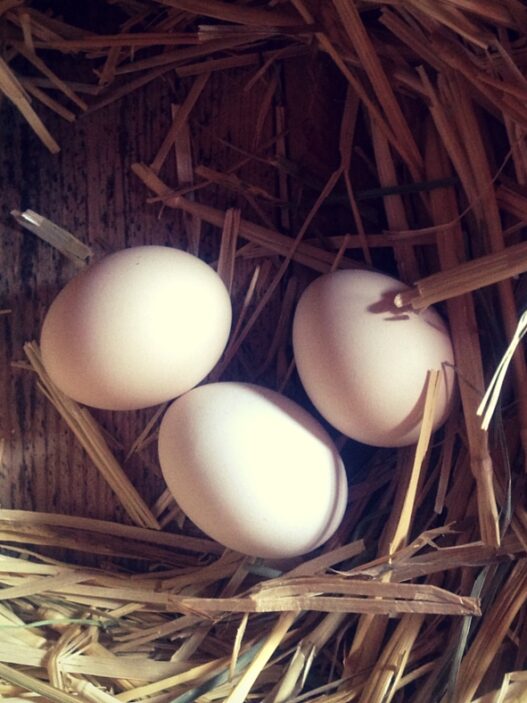
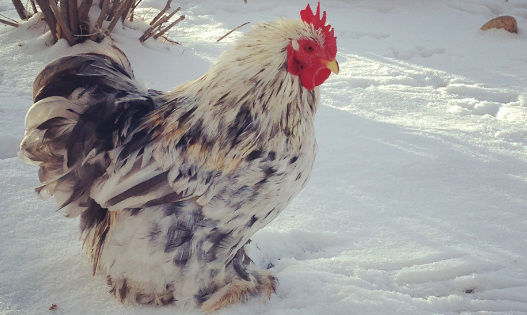
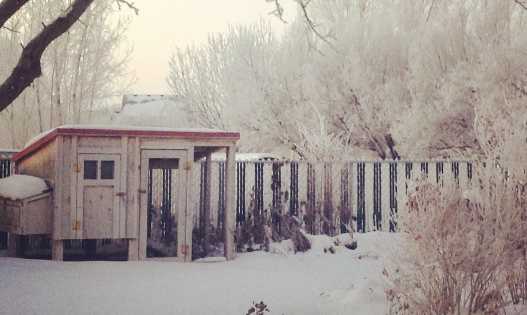
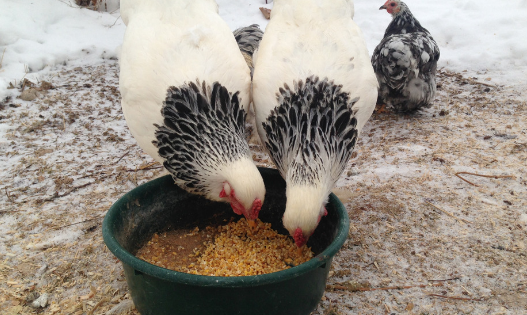
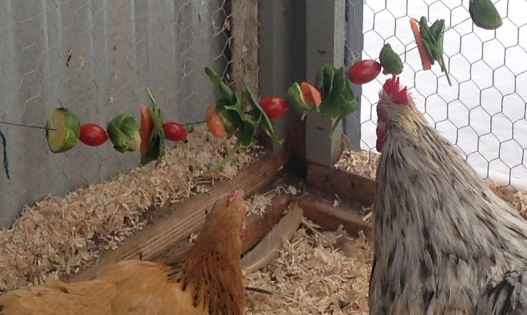
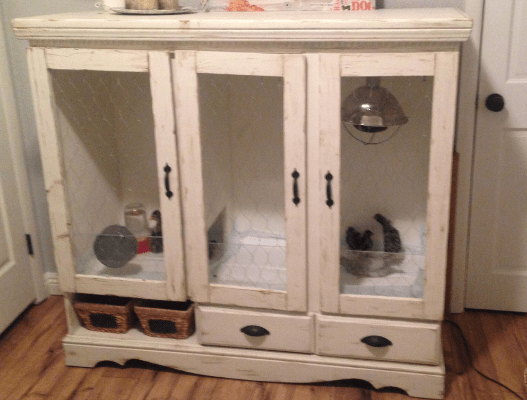
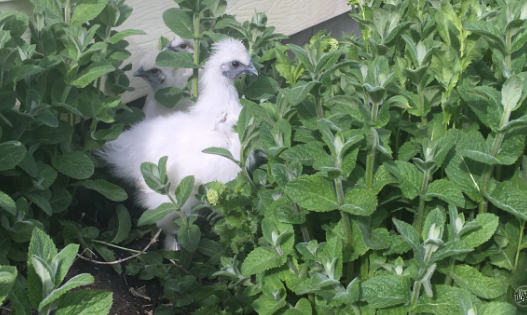

[…] Build this duck house › […]
[…] Photo by Project Zenstead […]
I love it! Solar lighting is the best kept secret of homesteading, I think. I’m so over the extension cords running everywhere. I love the removable brooder, too – what a great idea! Everyone would be use to each other by the time they need to come out and they’re warmer – so smart. I have to refurbish the one stationary coop we have and the floor is where I need to start. I’m going to look for some of that decking material on Craigslist because that’s a great idea! Thanks for all the inspiration!
Yay! A coop renovation will be awesome! And, yes, Craigslist is a perfect place to watch for old decking! It is so easy to keep clean – I love it! 😀
What a great idea to use a children’s playhouse. No doubt you’re the talk of the town. It’s adorable!
I love that you used a kid’s playhouse to make your chicken coop… I stared at your feature image thinking about how freaking CUTE your coop is! And I just love this idea! Thanks for sharing! Great info, as always!
That is one adorable chicken coop!! I love that you have space to put the brooder. When we had baby chicks we would always use the bathtub in our downstairs bathroom. After about a week, it would be so dusty and stinky, even with regular cleaning! Genius idea with the flooring as well. We lost a chicken to a digging predator. So awful!!
I love this coop! It’s so creative and with solar lighting, very impressive. I would love to see it in real.
Great ideas all the way threw your coop. I love the brooder idea bc all the ducks & chickens are already used to each other when its time to put them with the flock. I love the storge idea as well because you can keep all your stuff together. I hate when i have to pack straw, food or anything else out to my coop when its raining or snowing. But with your storage its all ready there for you when u get in the coop.
Having the brooder near your adult chickens is a lifesaver! We’ve never had a single problem introducing new chicks since we’ve been doing it this way! There’s so many awesome and creative things you can do to make your coop efficient and functional! So glad that I am able to help with some new ideas! 🙂
How can composite decking be plastic? It’s wood. I have a learning disability so I’m kinda confused
Hi Chelsey!
It is a bit confusing because the term “composite is used to describe so many different things. This certain type of decking material is called composite decking. The most common brand you see in stores in Trex Decking. It’s made from a several different things (including sawdust, recycled wood and recycled plastic) that are compressed to form the boards. Hope that explanation helps clear things up a bit!
How many dicks will this hold?
Ducks I mean ducks
Autocorrect is awful helpful, isn’t it? ? The recommended space is about 18 inches per duck for coops. This coop is 8’x8′ (~64 sq.ft.). So, technically, you could pack in a lot of ducks if you really wanted to! We housed 10 ducks and 6 chickens in this particular coop and there was plenty of room to spare!
Can you show a picture of your roosting bars please. I was told they need to be higher than your nesting boxes?
We actually don’t have this coop anymore (we moved a couple years ago) so I can’t share pictures. We generally have a couple different sets of nesting poles. We have one that is higher (usually about 4-5 feet off the ground) and one that is lower (only a foot or so off the ground) because some of our heavier birds (like our Brahmas) won’t fly up to the higher poles.